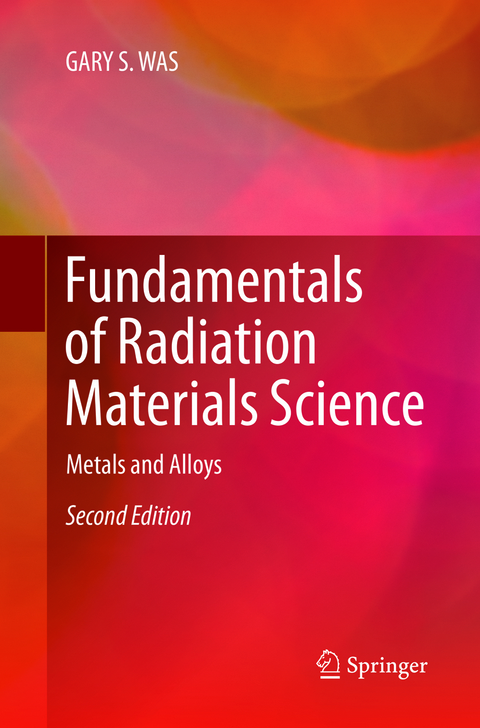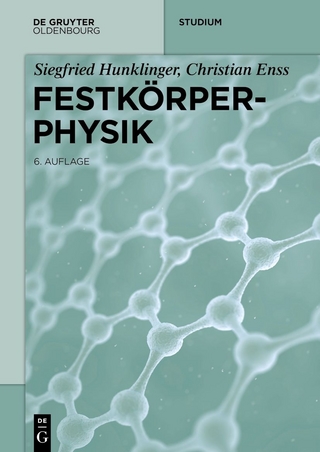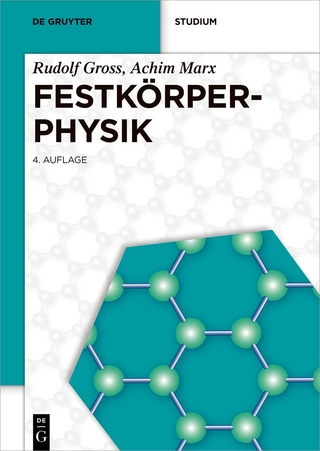
Fundamentals of Radiation Materials Science
Springer-Verlag New York Inc.
978-1-4939-8051-2 (ISBN)
Updated throughout, some major enhancements for the new edition include improved treatment of low- and intermediate-energy elastic collisions and stopping power, expanded sections on molecular dynamics and kinetic Monte Carlo methodologies describing collision cascade evolution, new treatment of the multi-frequency model of diffusion, numerous examples of RIS in austenitic and ferritic-martensitic alloys, expanded treatment of in-cascade defect clustering, cluster evolution, and cluster mobility, new discussion of void behavior near grain boundaries, a new section on ion beam assisted deposition, and reorganization of hardening, creep and fracture of irradiated materials (Chaps 12-14) to provide a smoother and more integrated transition between the topics.
The book also contains two new chapters. Chapter 15 focuses on the fundamentals of corrosion and stress corrosion cracking, covering forms of corrosion, corrosion thermodynamics, corrosion kinetics, polarization theory, passivity, crevice corrosion, and stress corrosion cracking. Chapter 16 extends this treatment and considers the effects of irradiation on corrosion and environmentally assisted corrosion, including the effects of irradiation on water chemistry and the mechanisms of irradiation-induced stress corrosion cracking.
The book maintains the previous style, concepts are developed systematically and quantitatively, supported by worked examples, references for further reading and end-of-chapter problem sets. Aimed primarily at students of materials sciences and nuclear engineering, the book will also provide a valuable resource for academic and industrial research professionals.
Reviews of the first edition:
"…nomenclature, problems and separate bibliography at the end of each chapter allow to the reader to reach a straightforward understanding of the subject, part by part. … this book is very pleasant to read, well documented and can be seen as a very good introduction to the effects of irradiation on matter, or
as a good references compilation for experimented readers." - Pauly Nicolas, Physicalia Magazine, Vol. 30 (1), 2008
“The text provides enough fundamental material to explain the science and theory behind radiation effects in solids, but is also written at a high enough level to be useful for professional scientists. Its organization suits a graduate level materials or nuclear science course… the text was written by a noted expert and active researcher in the field of radiation effects in metals, the selection and organization of the material is excellent… may well become a necessary reference for graduate students and researchers in radiation materials science.” - L.M. Dougherty, 07/11/2008, JOM, the Member Journal of The Minerals, Metals and Materials Society.
Professor Gary Was is the Walter J. Weber, Jr. Professor of Sustainable Energy, Environmental and Earth Systems Engineering and holds appointments in Nuclear Engineering and Radiological Sciences, and Materials Science and Engineering at the University of Michigan. He has held positions as Director of the Michigan Memorial Phoenix Energy Institute, Associate Dean of the College of Engineering and Chair of the Nuclear Engineering and Radiological Sciences Department. Professor Was’ research is focused on materials for advanced nuclear energy systems and radiation materials science, including environmental effects on materials, radiation effects, ion beam surface modification of materials and nuclear fuels. His current research includes development of structural materials for the SFR, behavior of fuel in the VHTR, fuel behavior modeling in LWRs, irradiation assisted stress corrosion cracking and irradiation-accelerated corrosion in water reactor environments. He is a Fellowof the Materials Research Society, ASM International, NACE International and the American Nuclear Society. Professor Was has published over 200 technical articles in referred, archival journals, presented over 300 conference papers, delivered 180 invited talks and seminars, and has published a graduate level textbook on Radiation Materials Science. Professor Was received the Presidential Young Investigator award from NSF, the Champion H. Matthewson Award from TMS, the Outstanding and Special Achievement Awards by the Materials Science and Technology Division of the American Nuclear Society, the Henry Marion Howe Medal from ASM, and the Lee Hsun Award from the Chinese Academy of Sciences.
Part I Radiation Damage.- 1 The Radiation Damage Event.- 2 The Displacement of Atoms.- 3 The Damage Cascade.- 4 Point Defect Formation and Diffusion.- 5 Radiation-Enhanced and Diffusion Defect Reaction Rate Theory.- Part II Physical Effects of Radiation Damage.- 6 Radiation-Induced Segregation.- 7 Dislocation Microstructure.- 8 Irradiation-Induced Voids and Bubbles.- 9 Phase Stability Under Irradiation.- 10 Unique Effects of Ion Irradiation.- 11 Simulation of Neutron Irradiation Effects with Ions.- Part III Mechanical Effects of Radiation Damage.- 12 Irradiation Hardening and Deformation.- 13 Irradiation Creep and Growth.- 14 Fracture and Embrittlement.- 15 Corrosion and Stress Corrosion Cracking Fundamentals.- 16 Effects of Irradiation on Corrosion and Environmentally Assisted Cracking.- Index.
| Erscheinungsdatum | 28.08.2018 |
|---|---|
| Zusatzinfo | 448 Illustrations, color; 177 Illustrations, black and white; XXVII, 1002 p. 625 illus., 448 illus. in color. |
| Verlagsort | New York |
| Sprache | englisch |
| Maße | 155 x 235 mm |
| Themenwelt | Naturwissenschaften ► Physik / Astronomie ► Festkörperphysik |
| Technik ► Elektrotechnik / Energietechnik | |
| Technik ► Maschinenbau | |
| ISBN-10 | 1-4939-8051-3 / 1493980513 |
| ISBN-13 | 978-1-4939-8051-2 / 9781493980512 |
| Zustand | Neuware |
| Informationen gemäß Produktsicherheitsverordnung (GPSR) | |
| Haben Sie eine Frage zum Produkt? |
aus dem Bereich


